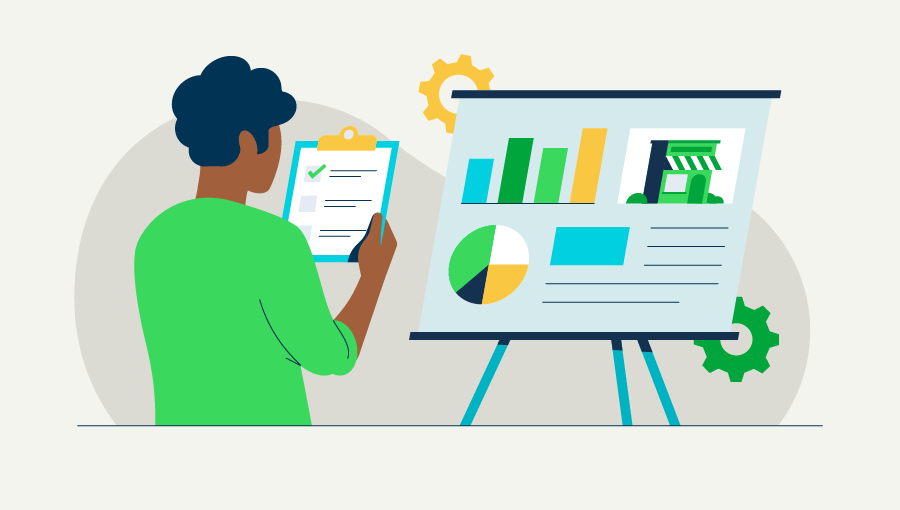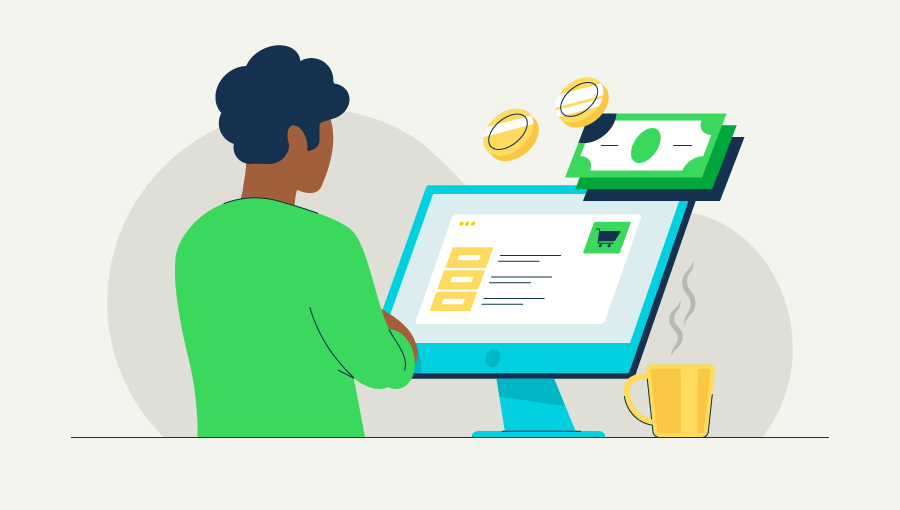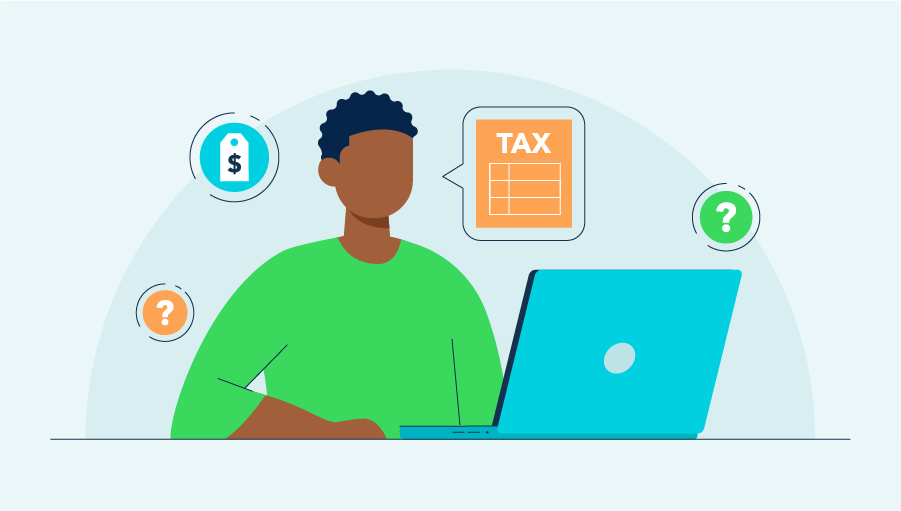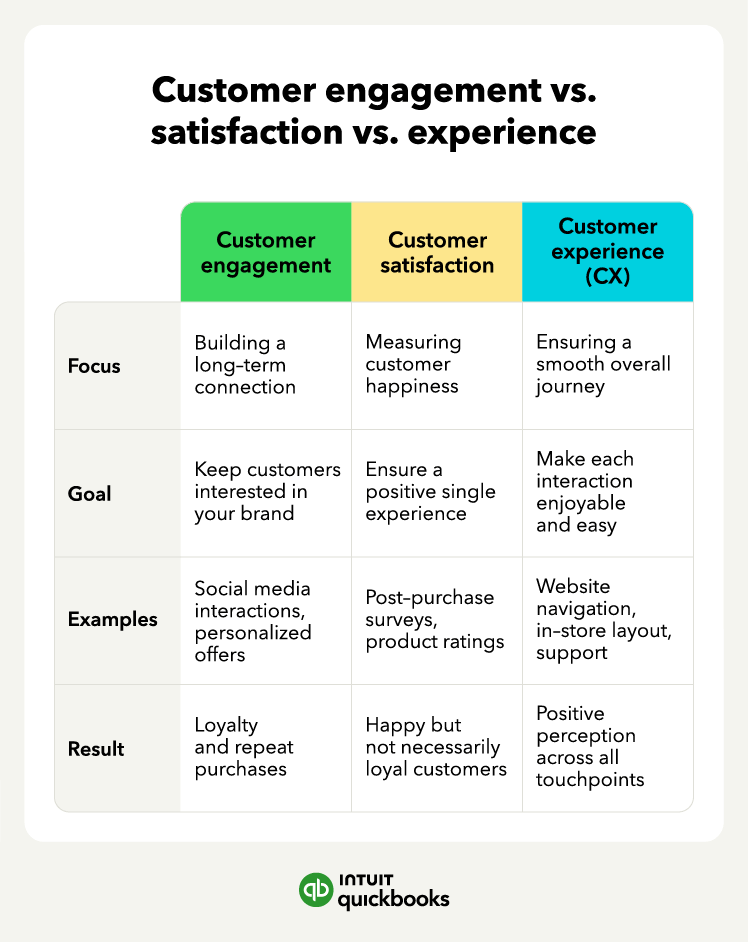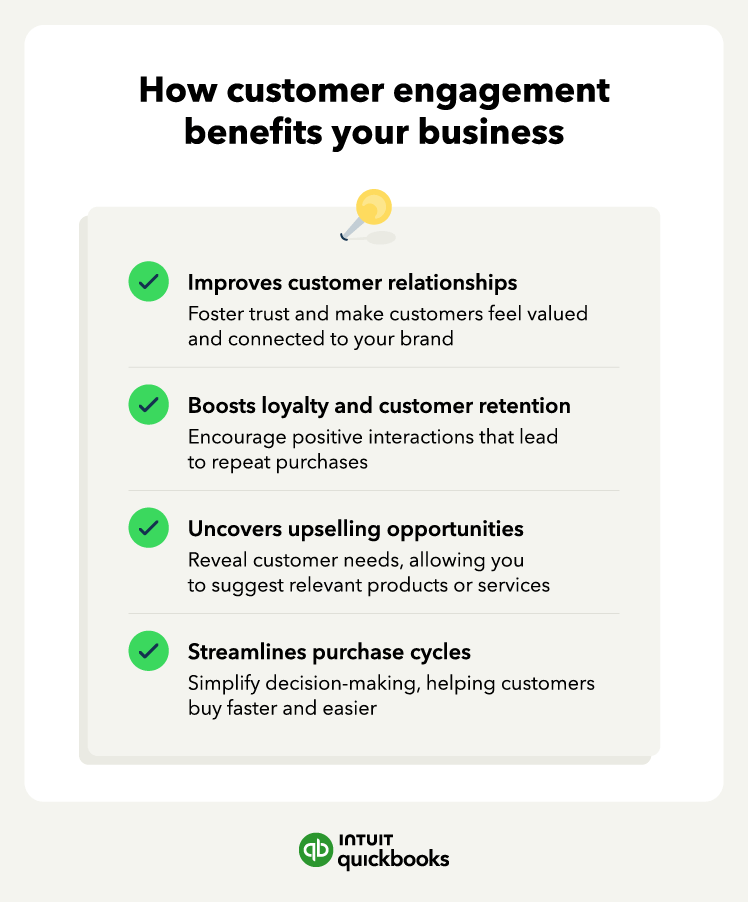Customer engagement vs. customer satisfaction
Customer satisfaction measures how happy customers are after they interact with your business. It’s often a one-time measurement, like how they felt after a purchase or service. A satisfied customer might leave a positive review, but that doesn’t always mean they’ll keep coming back.
On the other hand, customer engagement is ongoing. It’s a long-term relationship with customers. An engaged customer interacts with your brand regularly, whether it’s through social media, newsletters, or product updates. They’re not just happy with one purchase—they’re interested in your brand and keep coming back.
Customer engagement vs. customer experience (CX)
Customer experience is the full journey a customer has with your business—from their first website visit to their latest purchase. It’s about making every part of that journey smooth and positive.
Customer engagement, however, is the effort you put into keeping customers interested throughout that journey. For example, if CX is the road a customer takes, engagement is the scenery that makes the journey enjoyable.
